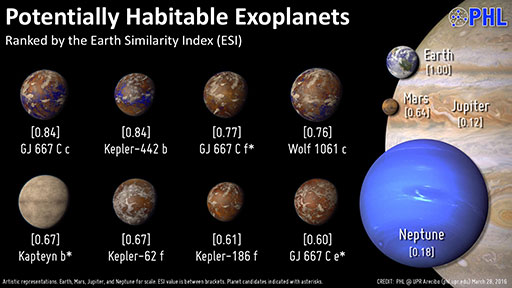4.3.1 Exoplanet encyclopedia

The Exoplanets Encyclopedia, run by the European exoplanet team, keeps an up-to-date list of how many exoplanets have been discovered – it now stands at more than 2000, including several systems where more than one exoplanet orbits its star.
Exoplanets are difficult to observe, partly because planets are very small compared with stars and partly because they don’t give out light of their own – planets ‘shine’ by reflecting light from the star they orbit. And this is the main reason why it is difficult to detect exoplanets – they are incredibly faint compared to a star. So how do you detect a faint planet-sized object orbiting a star many light years away?
The first exoplanet orbiting a main sequence star was observed in 1995. It has a mass much greater than that of the Earth – it is about half the mass of Jupiter – but orbits its star, 51 Pegasi, at a closer distance than Mercury orbits the Sun. For many years, the only exoplanets to be discovered were similar to this.
These hot Jupiters are gas giants that orbit very close to their stars and thus have a very high surface temperature. Hot Jupiters were, until the advent of spaceborne telescopes, the most common form of extrasolar planet known, because of the relative ease of detecting them from ground-based instruments.
In the next section, you will learn about the methods used to detect exoplanets.
